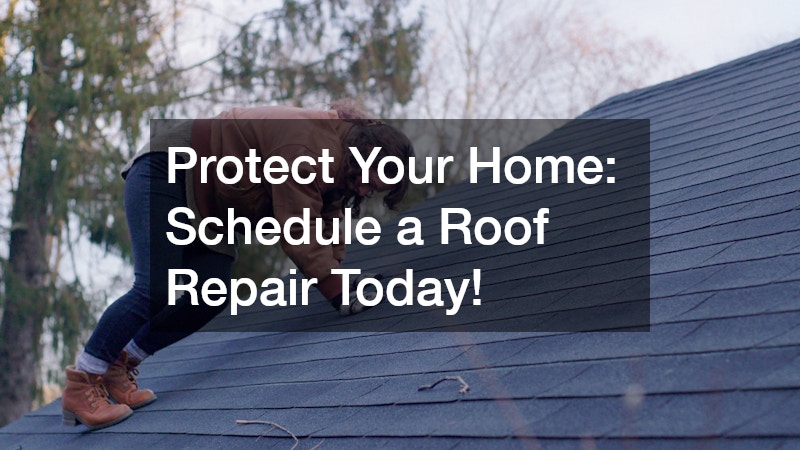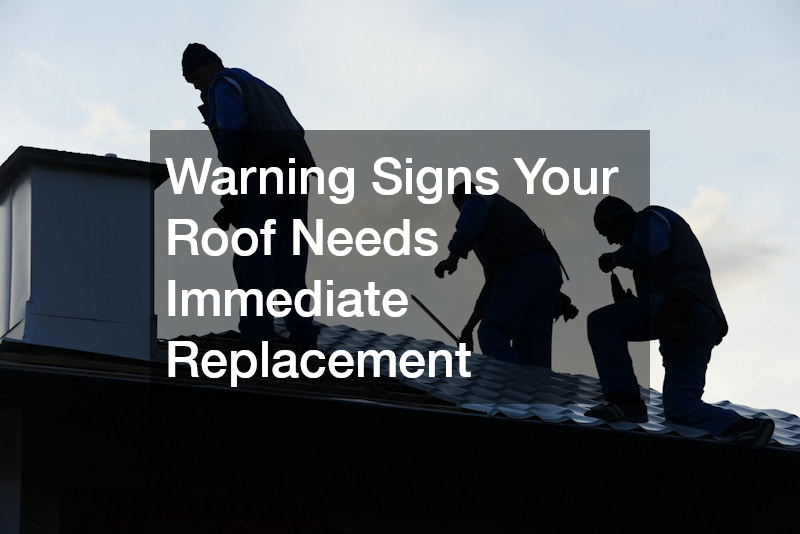Understanding when your roof requires immediate replacement can prevent costly damage and safeguard your home. While minor issues might be addressed through roofing repair, recognizing the point where roofing repair is no longer sufficient is crucial. This article delves into the most frequently asked questions and critical signs that indicate it’s time for a roof overhaul, helping homeowners avoid the pitfalls of delayed action.
How Do I Know If My Roof Needs to Be Replaced?
Determining whether your roof has reached the end of its lifespan often starts with assessing visible and structural indicators. Roofing repair can handle small problems, but widespread damage signals the need for full replacement.
One key factor is the age of the roof, as most roofs last 20-30 years, depending on materials and maintenance; if yours is approaching or exceeding this threshold, even with occasional roofing repair, it’s vulnerable to failure and should be inspected for overall wear, since an aging roof may not respond well to patchwork roofing repair alone. Another clear sign involves missing or damaged shingles, which can crack, curl, or disappear entirely due to wind, hail, or sun exposure—while isolated spots might qualify for roofing repair, extensive damage across large areas means the underlying structure is compromised, and ignoring this could lead to water infiltration where simple roofing repair won’t suffice. A sagging roof deck is particularly alarming, as it indicates severe issues like water damage or weakened supports, making it unsuitable for basic roofing repair and requiring immediate evaluation for replacement to avoid the risk of collapse and serious safety concerns. Additionally, finding granules in your gutters is a telltale indicator, especially with asphalt shingles that shed them over time; excessive amounts suggest accelerated deterioration that erodes the roof’s protective layer, and repeated roofing repair attempts won’t restore longevity, so replacement becomes the smarter option. Finally, water leaks or stains on interior ceilings and walls point directly to roof breaches—even if you opt for temporary roofing repair, persistent leaks often stem from widespread failure, necessitating a full roof replacement to eliminate the root cause effectively.
What Are the Risks of Not Replacing a Damaged Roof?
Delaying roof replacement amplifies problems, turning minor concerns into major hazards, and relying solely on roofing repair for a failing roof can exacerbate these risks significantly. For instance, structural damage arises from water seepage that weakens beams, rafters, and walls, leading to costly repairs that extend far beyond the roof itself—what begins as a need for roofing repair can quickly evolve into foundation issues if replacement is postponed. Mold and mildew growth is another serious consequence, as trapped moisture fosters these harmful elements that spread rapidly and degrade indoor air quality, posing health risks from allergens. While roofing repair might seal a leak temporarily, only a complete replacement ensures long-term dryness and prevents recurrence. Increased energy costs also become a burden, since a compromised roof allows heat or cool air to escape, spiking utility bills through inefficient insulation—patching with roofing repair won’t fully resolve this inefficiency, but replacement restores proper energy efficiency and can lead to noticeable savings. Furthermore, a damaged roof decreases property value, as potential buyers easily spot issues during inspections, which can lower your home’s market appeal and deter offers; incomplete roofing repair won’t fool appraisers, whereas a new roof boosts curb appeal and overall valuation. Safety hazards round out the dangers, with loose materials or structural instability potentially causing accidents like falling debris, and in extreme cases, roof failure during storms can endanger occupants—prioritizing roofing repair over replacement ignores these threats, which could result in injuries, evacuations, or even worse outcomes.
What Are the Costs Involved in Roof Replacement?
Budgeting for roof replacement involves more than just materials, and understanding all expenses helps avoid surprises, especially since roofing repair is cheaper upfront but replacement offers better long-term value. Material costs vary widely by type, with asphalt shingles typically running $3-5 per square foot and premium options like metal reaching $8-15, so factoring in your roof’s roofing repair history can guide choices toward greater durability. Labor expenses add another layer, averaging $5,000-10,000 for a standard home, depending on the project’s complexity, as skilled crews ensure high-quality installation, unlike DIY roofing repair attempts that often fall short. Permits and inspections are essential due to local regulations, costing $100-500 and ensuring the replacement complies with building codes, which goes beyond the scope of typical roofing repair projects. Disposal fees for removing old materials range from $300-800, covering dumpster rentals and landfill charges, and eco-friendly options might increase this slightly but promote sustainable practices in roofing repair and replacement alike. Potential hidden costs should also be anticipated, such as unforeseen issues like deck rot or chimney repairs that can add thousands—a thorough pre-replacement inspection minimizes these surprises and clearly distinguishes when replacement is needed over mere roofing repair.
How Long Does a Roof Replacement Take?
The timeline for roof replacement varies based on several factors, but planning ahead ensures minimal disruption, unlike quick roofing repair jobs that might wrap up in a day but don’t address underlying problems. Project planning kicks things off, with initial consultations and material selection typically taking 1-2 weeks to set the stage for efficient execution. Weather considerations play a major role, as ideal conditions involve dry and mild days, while rain can cause delays extending the process by days or even weeks, contrasting with indoor-focused roofing repair that isn’t as weather-dependent. The complexity of the roof’s design influences duration too, with steep pitches or multiple layers adding extra time—a simple roof might complete in 2-3 days, whereas more intricate ones could require 5-7 days overall. The size of the roof directly impacts the schedule, as larger homes over 2,000 square feet might take a full week, scaling well beyond the brief timelines of standard roofing repair tasks. Finally, contractor availability can introduce waits of 2-4 weeks during busy seasons, so selecting reliable professionals is key to timely completion without sacrificing quality.
What Are the Most Durable Roofing Materials?
Selecting durable materials during replacement extends the roof’s lifespan and reduces future needs for roofing repair, providing peace of mind for homeowners. Asphalt shingles stand out for their affordability and 20-30 year durability, making them a popular choice with easy installation and minimal ongoing roofing repair requirements. Metal roofing offers even greater longevity, lasting 40-70 years while resisting harsh weather conditions and needing little in the way of roofing repair, which makes it ideal for areas prone to storms or extreme temperatures. Slate roofing provides exceptional endurance of 75-200 years, delivering timeless elegance and requiring rare roofing repair due to its natural resilience. Tile roofing, whether concrete or clay, holds up for 50-100 years with excellent insulation properties and a low frequency of roofing repair, suiting Mediterranean or warm climates particularly well. Wood shakes and shingles bring a rustic aesthetic with 30-50 year durability, though they may occasionally need roofing repair to address weathering from moisture or sun exposure.
Recognizing the warning signs and understanding the implications of a failing roof are critical in protecting your home’s integrity. Investing in timely roof replacement not only safeguards your property but also ensures the safety and comfort of its inhabitants. Don’t wait for disaster—contact a professional today for an inspection. If roofing repair isn’t enough, replacement could save you thousands in the long run.


